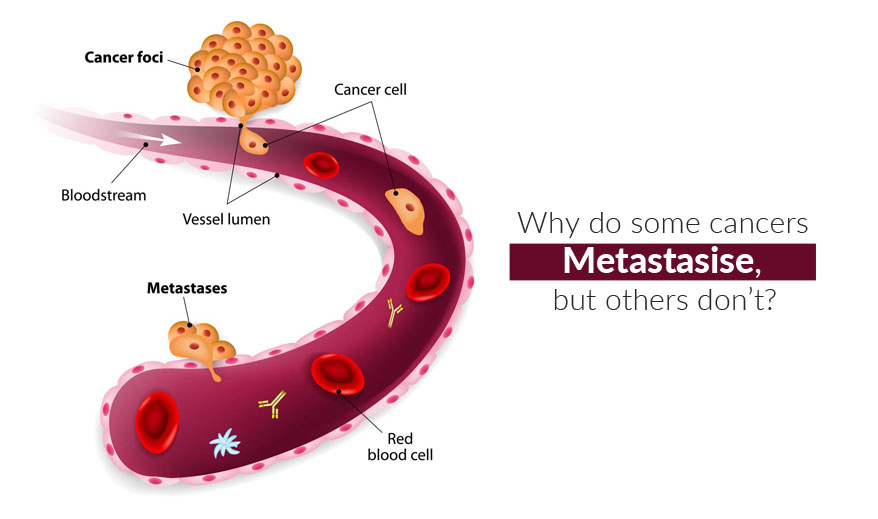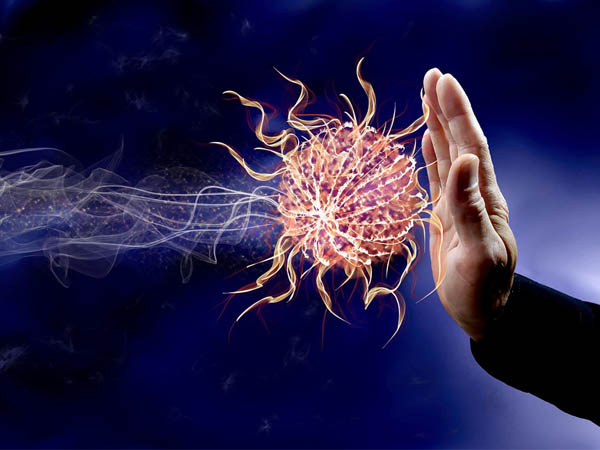Metastasis is complex. We have so many unanswered questions about how and why cancer spreads around the body but one thing we do know is that not all cancers metastasize and some do it faster than the others. In simple words, metastasis means the development of cancer in a different body part from the primary site. The cells have to go through changes as they change the original path in the primary tumor to new tumors they seed and form throughout the body. The doctors may also call it ‘advanced cancer’, ‘stage 4 cancer’, or ‘metastatic cancer’ but all these terms can have different meanings. For instance, cancer which is large but has not actually spread to different body parts can also be called advanced cancer or locally advanced cancer.
Metastasis is complex. We have so many unanswered questions about how and why cancer spreads around the body but one thing we do know is that not all cancers metastasize and some do it faster than the others. In simple words, metastasis means the development of cancer in a different body part from the primary site. The cells have to go through changes as they change the original path in the primary tumor to new tumors they seed and form throughout the body.
The doctors may also call it ‘advanced cancer’, ‘stage 4 cancer’, or ‘metastatic cancer’ but all these terms can have different meanings. For instance, cancer which is large but has not actually spread to different body parts can also be called advanced cancer or locally advanced cancer.
How does Metastatic Cancer Spread?
The tumor cells can spread around the body using one of the two major what are called ‘highways’. The tissues in the body are served by the blood vessels (which provide nutrients and oxygen) and lymphatic vessels which drain the excess fluid to the nearby lymph glands. The first opportunity for many cells is to escape via the lymphatic drainage system which is why many cancer lymph nodes are biopsied or removed at the surgery to see if cancer has spread and determine the ‘stage’ of cancer. Further, the cancer cells can enter the bloodstream either directly from a vessel in the primary tumor or indirectly via lymphatics. The cancer cells are used to being attached to the proteinaceous matrix, which when(remove) dies on being detached from the support. The majority of tumor cells get stuck in the first capillary bed that they float into which is why colon cancer tends to metastasize to the liver, etc. However, this is not always the case, and some tumor cells end up in distant organs.
The tumor cells can spread around the body using one of the two major what are called ‘highways’. The tissues in the body are served by the blood vessels (which provide nutrients and oxygen) and lymphatic vessels which drain the excess fluid to the nearby lymph glands. The first opportunity for many cells is to escape via the lymphatic drainage system which is why many cancer lymph nodes are biopsied or removed at the surgery to see if cancer has spread and determine the ‘stage’ of cancer. Further, the cancer cells can enter the bloodstream either directly from a vessel in the primary tumor or indirectly via lymphatics. The cancer cells are used to being attached to the proteinaceous matrix, which when(remove) dies on being detached from the support. The majority of tumor cells get stuck in the first capillary bed that they float into which is why colon cancer tends to metastasize to the liver, etc. However, this is not always the case, and some tumor cells end up in distant organs.
The tumor cells can spread around the body using one of the two major what are called ‘highways’. The tissues in the body are served by the blood vessels (which provide nutrients and oxygen) and lymphatic vessels which drain the excess fluid to the nearby lymph glands. The first opportunity for many cells is to escape via the lymphatic drainage system which is why many cancer lymph nodes are biopsied or removed at the surgery to see if cancer has spread and determine the ‘stage’ of cancer.
Further, the cancer cells can enter the bloodstream either directly from a vessel in the primary tumor or indirectly via lymphatics. The cancer cells are used to being attached to the proteinaceous matrix, which dies on being detached from the support. The majority of tumor cells get stuck in the first capillary bed that they float into which is why colon cancer tends to metastasize to the liver, etc. However, this is not always the case, and some tumor cells end up in distant organs.
Where can Cancer Spread in the Body?
Cancer can spread to almost all the parts of the body but some types of cancer usually spread to only certain parts of the body. For instance:
Rarely or less frequently, cancer can spread to the skin, muscle, or other organs in the body. The cancer cells can also spread to the lining around the lungs called the pleural cavity. It can also spread to the peritoneal cavity. When these cancer cells cause fluid to build up in these areas, it is called malignant pleural effusion and malignant ascites.
Diagnosing Metastatic Cancer
Cancer which has spread to the nearby tissues or lymph nodes is called the locally advanced cancer. Similarly, cancer from the primary or original site to other places in the body is called advanced cancer. And when the cancer has spread to other parts of the body, it is called metastatic cancer. The liver, lungs, lymph nodes and bones are common areas of metastasis.
Even when the metastatic cancers spread to a new location, it is still named after the area of the body from where it started. For instance, if a person with breast cancer has cancer spread to the bones it is said to have breast cancer with bone metastases. In cases where cancer spreads widely throughout the body before it is discovered and it is unknown where it started exactly, it is called the cancer of unknown primary origin.
In addition to this, if you already had cancer treatment for metastatic cancer, you probably have a follow-up care plan. You will see your doctor for regular checkups when tests can be done to look for metastasis. Cancer may also cause symptoms such as pain or shortness of breath. In such cases, the doctor can do the necessary tests to find the metastasis.
About The Author
Dr. Tarang Krishna, Director at Cancer Healer Center, is the perfect epitome of perseverance and dedication.
He has an impressive educational background to his credit. He completed his under-graduation in Medicine and Surgery from Pune, India and did his MD (Hom) from Agra University, India.Thesis on MD was on "Treatment of cancer" where he presented cases of almost 100 patients and the response of the medicines in the treatment of cancer. He then completed his Ph.d in Oncology from the United Kingdom and his thesis on the ‘Efficacy of Medicines in the Treatment of Cancer’ is greatly commemorated and honored.
He befittingly represents alternate medicine and has contributed significantly towards the development and research of immunotherapy.
Through his nationwide chain of “Cancer Healer Center” clinics he strives to offer superior cancer treatment, using immunotherapy.








_1552549280.jpeg)